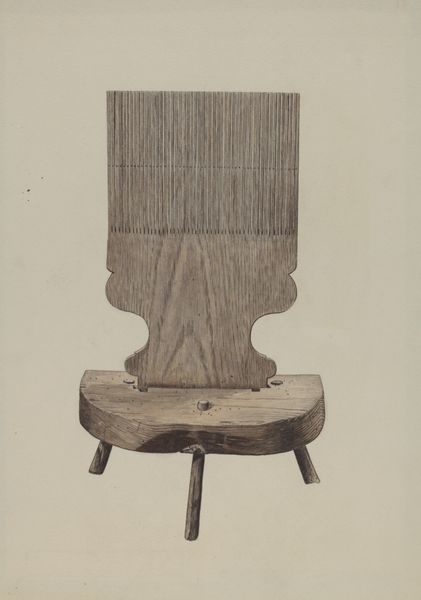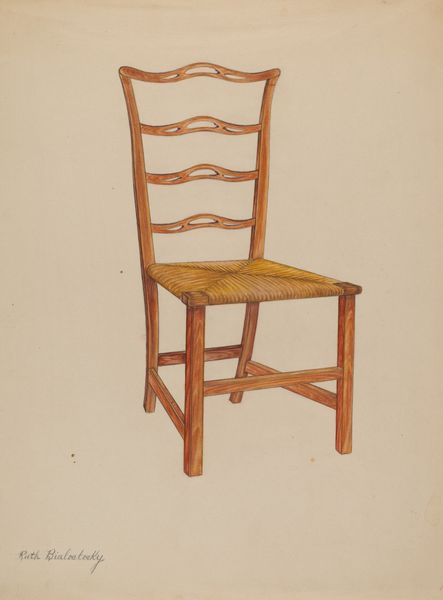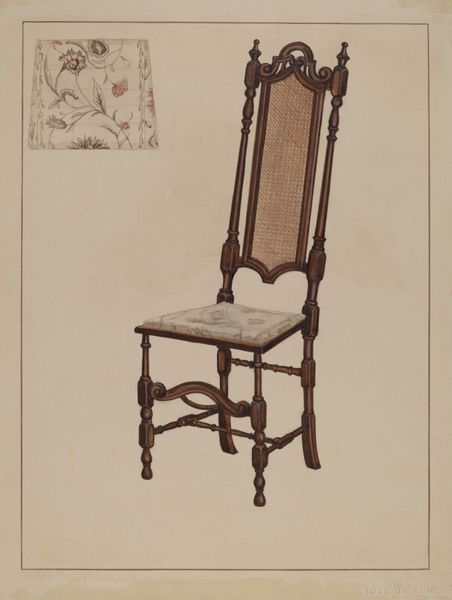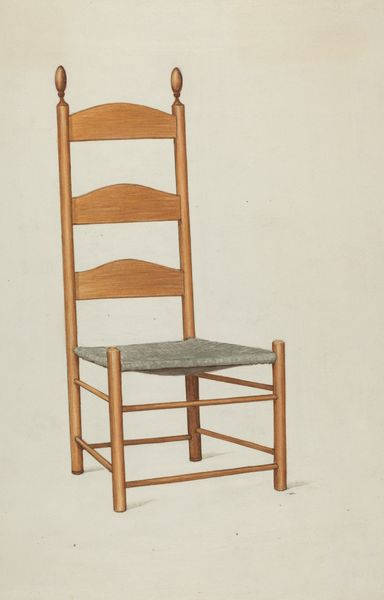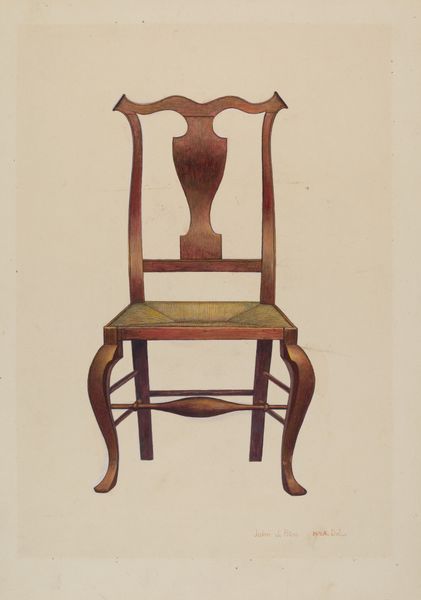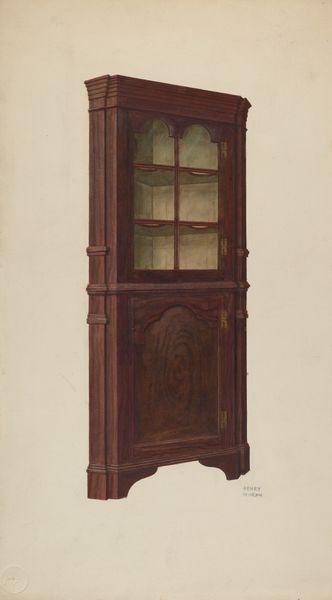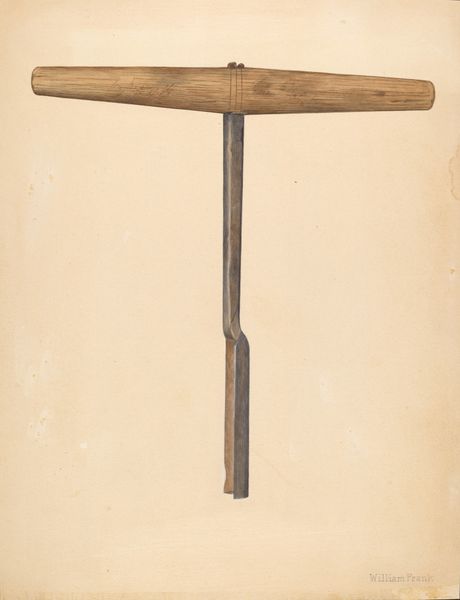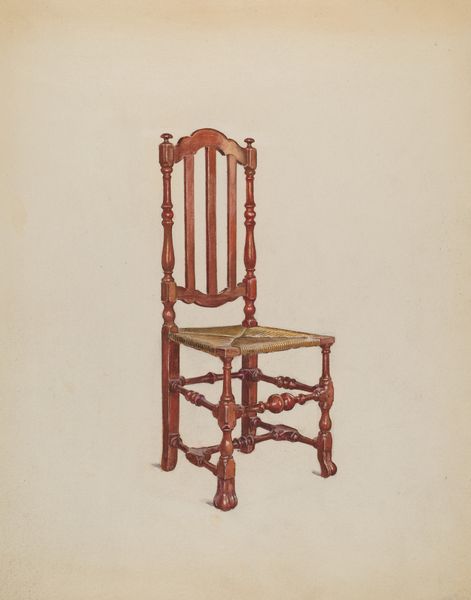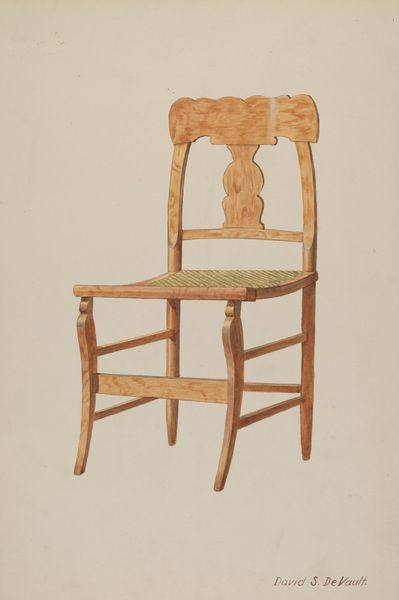
drawing, pencil, architecture
#
drawing
#
geometric
#
pencil
#
architecture
#
realism
Dimensions: overall: 27.8 x 15.1 cm (10 15/16 x 5 15/16 in.)
Copyright: National Gallery of Art: CC0 1.0
Editor: We're looking at "Newel Post," a pencil and drawing piece made around 1937 by Alfred H. Smith. There's a real focus on the geometric shapes of the staircase – it feels almost like a study in architectural forms. What stands out to you most in terms of the artwork’s intrinsic elements? Curator: The composition is particularly striking. Smith directs our gaze through a meticulously rendered arrangement of vertical and horizontal lines. Observe how the wood grain, captured with remarkable realism, adds another layer of texture. It establishes a compelling interplay between the rigidity of architectural structure and the inherent patterns of natural material. Editor: I see that. How does the restricted color palette influence our reading of the subject matter? Curator: Precisely. The limited palette amplifies the impact of the lines and forms. Notice the subtle gradations of tone, almost monochromatic, within the brown hues, underscoring the interplay of light and shadow. It allows us to fully engage with the geometric and spatial qualities of the depicted staircase. Editor: So, you are saying the simplification is actually what draws the attention to form? Curator: Yes, through its reduction to pure form, it prompts an inquiry into our sensory experiences and our way of experiencing visual input as spatial construction. What are your final thoughts on how Smith utilizes realism to enhance this study? Editor: It makes me appreciate the beauty in the everyday, seeing something functional turned into art through form and close observation. Thank you, I've learned a lot about analyzing art on a structural level today! Curator: And I from you. Looking at the relationship between functional realism and implied spatial organization opened up several perspectives.
Comments
No comments
Be the first to comment and join the conversation on the ultimate creative platform.




